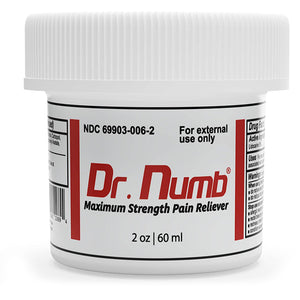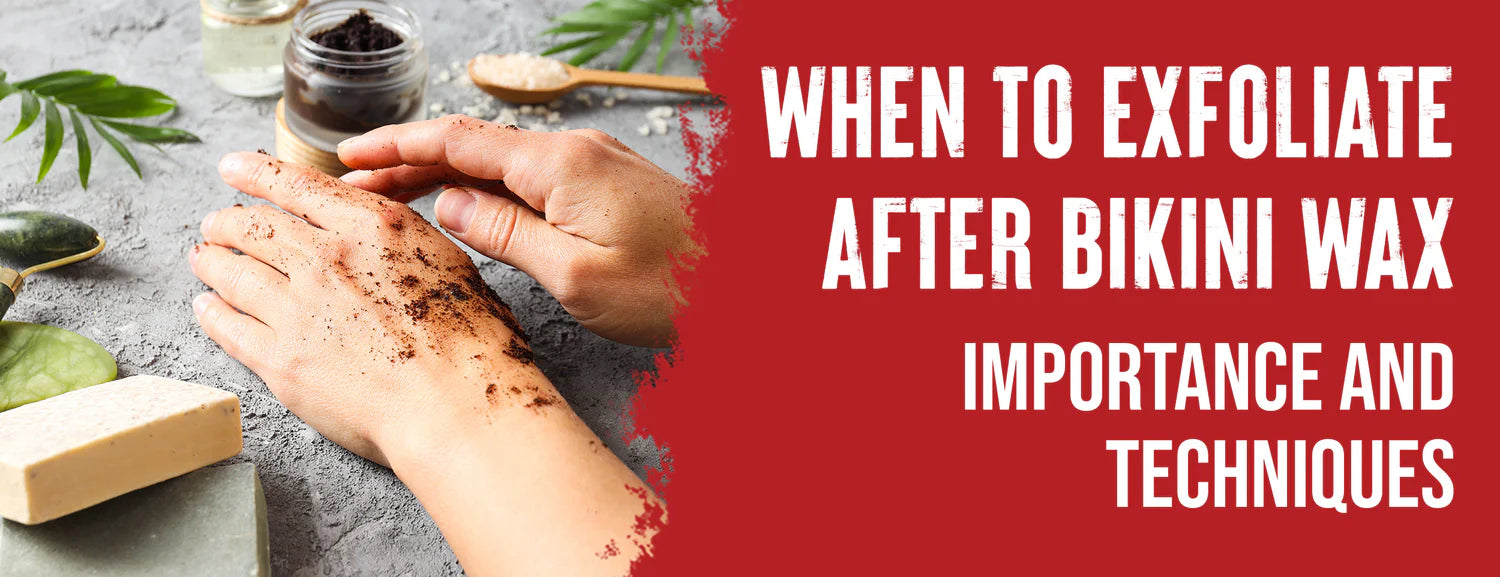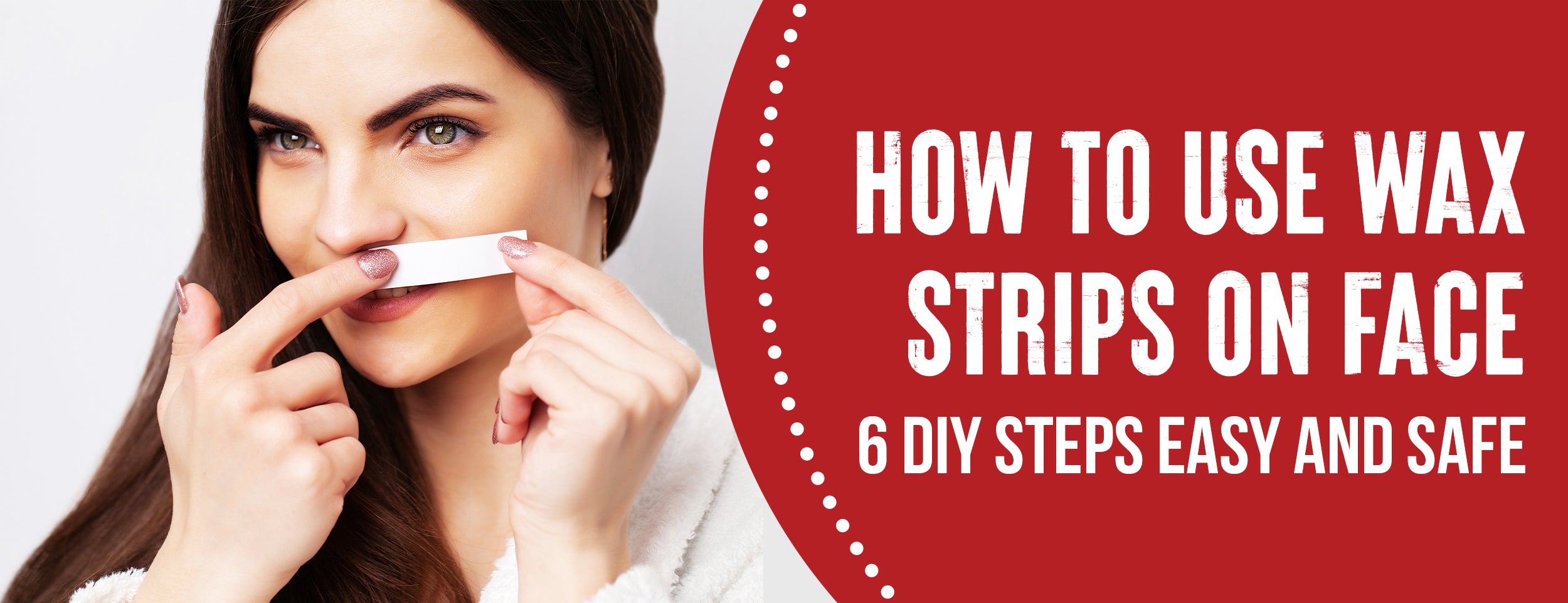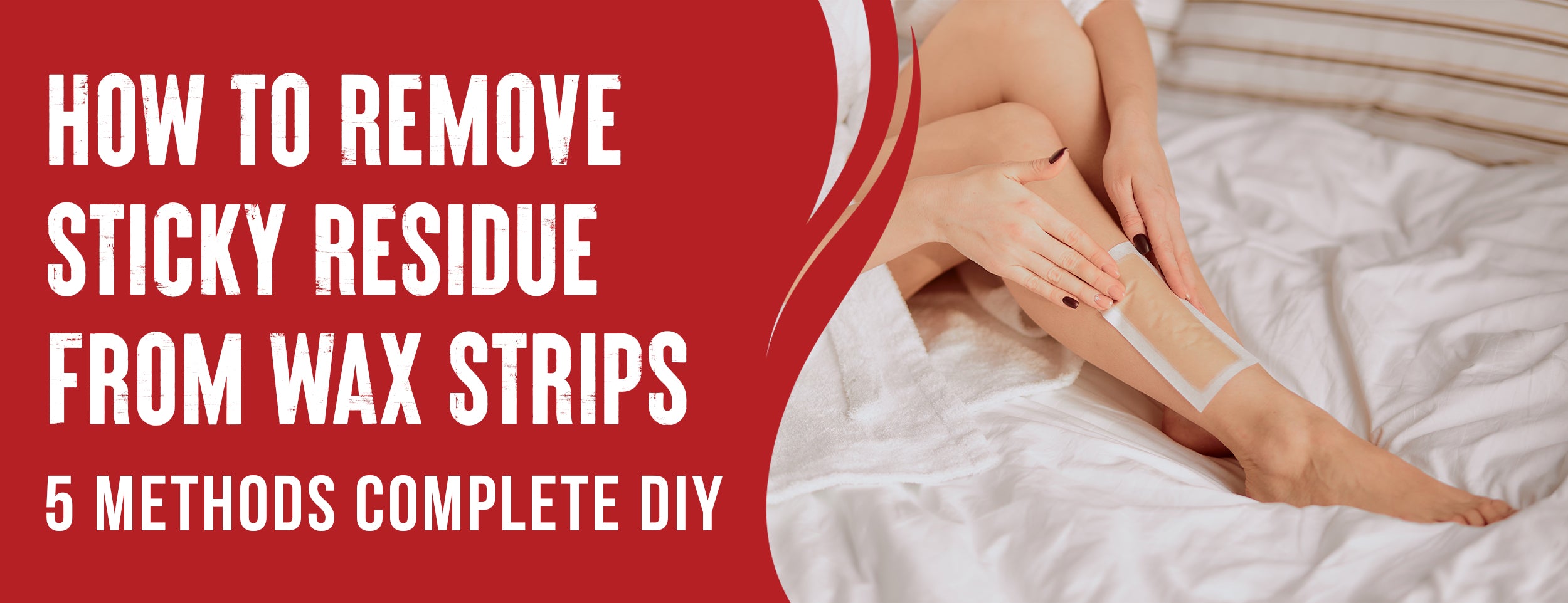Facial waxing is all about pulling against the grain. You apply wax the same way your hair grows and pull it off the other way. You should be bold and seek professional advice if you need clarification on the growth direction for areas such as the chin or upper lip.
Not only does wax remove hair from the root, but it also leaves your skin feeling smoother and more refreshed. Whether you're dealing with pesky mustaches, prickly chin hairs, or those tiny pesky hairs that seem to always appear out of nowhere, it can all be pretty frustrating.
In this blog post, we'll share valuable insight on how to wax your facial hair effectively. From pre-waxing preparation to post-waxing care and potential risks, we'll cover all the steps you need to take to ensure you get the desired results.
How to Wax Facial Hair: 6 Steps

A few simple techniques and tools will make waxing facial hair a breeze. To ensure a successful waxing experience, apply and remove the wax properly. We'll explore the essential techniques for applying and removing wax professionally and precisely.
Applying Wax Effectively
Choose the Right Type of Wax for Your Skin
Choosing the correct wax is crucial in ensuring a successful waxing session for your facial hair. Various types of wax are available in the market, such as soft wax, hard wax, sugar wax, and more. Each class has different formulations that cater to different skin types.
- Soft Wax: This type of wax is usually used with cloth strips. It is best suited for sensitive skin and fine hair. Soft wax adheres perfectly to the hair strands, once removed, it takes the hair off the root.
- Hard Wax: This wax is applied thickly and cools and hardens before peeling off. It is best suited for persons with thick, coarse hair. Hard wax is also an excellent option for those with sensitive skin. Hard wax beans are perfect for this.
- Sugar Wax: This wax only uses natural ingredients, making it the best choice for sensitive skin. Sugar wax sticks to the hair, not the skin, making removing it less painful.

Heat Wax to the Optimal Temperature
Before applying wax to your facial hair, it's essential to heat it to the optimal temperature. Heating the wax allows it to melt and spread quickly on the hair and skin. The optimal temperature is different for different types of wax.
- Soft Wax: Melt the wax until it liquifies and has a honey-like consistency.
- Hard Wax: Warm the wax until it melts and has a creamy, thick consistency.
- Sugar Wax: Heat the wax until it becomes pliable and feels like taffy.
Applying Wax in the Direction of Hair Growth
Applied hair wax in the growth direction is crucial to achieve the best results. Going against the growth direction can lead to hair breakage, skin irritation, and pain. Applying wax in the order of hair growth ensures that each strand is coated and removed correctly.
Removing Wax Properly
Use a Cloth Strip to Remove the Wax
Using a cloth strip to remove wax is the most common hair removal method. When pulled off, a cloth strip adheres to the wax and removes the hair from the root.
Pull the Strip In the Opposite Direction

When removing wax with a cloth strip, pulling it off in the opposite direction of hair growth is essential. Pulling the strip toward hair growth will not remove the hair correctly and could lead to ingrown hair or skin irritation.
Apply Pressure to the Skin After Removing Wax
The skin may feel tender, red, and irritated after wax removal. Applying pressure to the waxed area using a cool cloth helps soothe the skin. The pressure ensures the skin is not tender and helps remove any excess wax residue.
Facial Hair Waxing: 4 Pre-Waxing Tips
If you're interested in getting a facial wax, there are several pre-waxing tips that you should keep in mind to ensure that your experience is as pain-free and successful as possible. Here are the four essential pre-waxing tips you need to know:
Growing Out Hair to the Optimal Length
One of the most essential pre-waxing tips you should remember is growing your hair to the optimal length. The optimal size for waxing facial hair is about 1/4 inch long. If your hair is too short, it may be too difficult for the wax to grab onto, resulting in an incomplete job. If your hair is too long, waxing may be more painful. Make sure your hair is the correct length to achieve the best results.
Exfoliating the Skin Before Waxing
The process of exfoliating your skin before waxing is also crucial. This will help remove dead skin cells, oils, and dirt that may block the wax from reaching the hair follicles. Exfoliating is particularly important if you have sensitive skin, as it will help to minimize any redness or irritation caused by waxing. It is recommended to exfoliate the day before you wax.
Avoiding Lotions and Oils Before Waxing
Lotions and oils can create a barrier between your skin and the wax, making it harder for the wax to stick to your hair. It's crucial to avoid using lotions or oils on the area you plan to wax. It is also recommended to avoid using any products containing alpha hydroxy acids (AHAs) or acne medications that could make the skin more sensitive.

Sanitizing And Cleaning The Wax Area
Before you begin waxing, ensure the area is clean and sanitized. This includes thoroughly cleaning with water and mild soap and then applying an antiseptic cleaner like rubbing alcohol. This will reduce the risk of infection and help ensure the site is ready for the wax.
Waxing Facial Hair: 4 Aftercare Tips
As you prepare to wax your facial hair, it is essential to understand the aftercare that your skin will require. By following the tips below, you can ensure that your skin remains smooth and healthy after waxing.
Soothing the Skin After Waxing
After waxing, your skin may feel sensitive and irritated. To help soothe the skin, try the following tips:
- Apply a cold compress to the affected area to reduce redness and swelling.
- Use an aloe vera gel or lotion to calm the skin and promote healing.
- Avoid hot showers or baths, as they can further irritate the skin.
Avoiding Certain Activities and Products
To prevent further irritation or damage to the skin, it is essential to avoid certain activities and products in the days following your waxing session. These include:
- Avoid sun exposure and tanning beds, which can cause further irritation and damage to the skin.
- Refrain from using harsh exfoliants or scrubs, which can irritate the skin and cause ingrown hairs.
- Avoid tight clothing or fabrics that can rub against the skin and cause irritation.
Taking Care of Ingrown Hairs and Redness
Ingrown hairs are a common occurrence after waxing, but they can be treated and prevented with the following tips:
- Use a gentle exfoliating scrub or brush to prevent dead skin cells from clogging hair follicles.
- Ingrown hairs can be relieved by applying a warm compress to the affected area.
- Use a topical cream containing salicylic acid to reduce inflammation and prevent further ingrown hairs.
Preparing for Your Next Waxing

Preparing for your next session is essential to ensure a successful and comfortable waxing experience. Follow these tips:
- Let your hair grow out to the recommended length before your next appointment.
- Avoid shaving or using hair removal creams in between sessions.
- Stay hydrated and maintain a balanced diet to promote healthy skin growth.
Face Waxing: Potential Risks & Precautions
Waxing facial hair has become a standard method for many to maintain a smooth and hair-free face. While it may seem like a quick and easy fix, like any beauty treatment, there are potential risks. Before grabbing that waxing kit, we will explore the potential dangers of waxing facial hair and what you need to know.
Possible Risks of Waxing Facial Hair
- Skin Irritation and Allergic Reactions: Waxing can cause skin irritation, especially for sensitive skin. The skin can become red, swollen, or itchy. Additionally, some people can experience allergic reactions to wax or certain ingredients in the wax.
- Burns: Waxing involves hot wax, which can lead to burns if incorrectly applied. It's essential to test the temperature of the wax before applying it to your skin and to stick to the instructions.
- Ingrown Hairs: Waxing can lead to ingrown hairs, especially if you have curly hair or if the hair was not removed properly. Ingrown hairs can be irritating and painful, and they can also lead to skin infections.
- Bacterial Infections: If the waxing equipment is not properly sanitized, it can lead to bacterial infections. This can happen if the same waxing strip is reused or the wax is not heated to the appropriate temperature.
- Skin Discoloration: Waxing can cause skin discoloration, especially for darker skin tones. This can occur if the skin is too thin or the wax is too hot.

Precautions to Take When Waxing Facial Hair
- Skin allergies or sensitive skin should avoid waxing.
- Do a patch test before waxing to ensure you don't have any allergic reactions.
- Ensure that the waxing equipment is properly sanitized before use.
- Always follow the instructions provided with the waxing kit before use.
- Take necessary measures to avoid burns while using hot wax.
- Exfoliate before waxing to help prevent ingrown hairs.
- Use a moisturizer after waxing to soothe the skin.
Conclusion
Facial waxing can be a game-changer in your daily beauty routine. With some knowledge and experience, you can achieve salon-quality results from the comfort of your home. However, it's important to remember that facial waxing can be painful and potentially risky if not done correctly.
It's essential to follow the steps outlined in this article and to be cautious and patient during the process. You'll enjoy silky-smooth skin and longer-lasting results with the right tools and techniques. Give it a try and experience the benefits of facial waxing for yourself.














